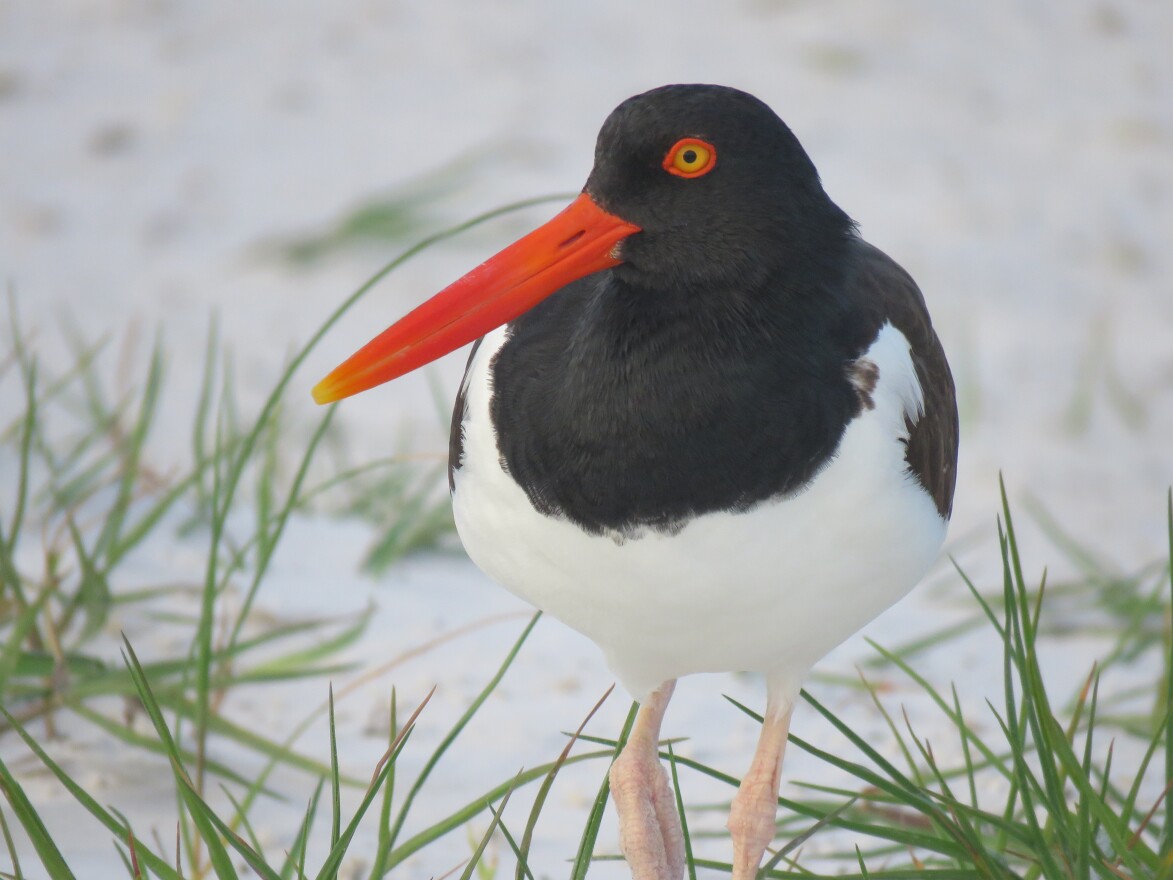Beach closures due to the coronavirus pandemic are devastating Florida’s tourism industry but they could be beneficial for shorebirds that nest on the sand this time of year.
Typically birds like least terns, American oystercatchers and black skimmers have to share beaches with hordes of beachgoers as they lay their eggs on bare sand or in shelly areas.
Listen to an audio version of this story
Dwindling nesting habitat for these birds has affected their numbers and caused state wildlife officials to consider them threatened.
But this year, they’ve had a lot more real estate.
CORONAVIRUS: Complete Coverage From WUSF And WUSF Public Media
“Because there aren't so many people on the beach anymore, the birds may be finding these really great open areas that they never had access to before to nest,” said Holley Short, Florida Audubon Society project manager for bird stewardship and monitoring.
One drawback, she said, is the monitoring of the birds’ nesting areas isn’t what is has been in years past.
The Audubon Society usually has employees and volunteers who keep an eye on nesting shorebirds and cordon off their nests to try to protect them. But that's not happening now.
RELATED: Pinellas Commissioners To Consider Easing Beach Restrictions
Short worries that once the public beaches are open again, people may inadvertently trample on the nests. The shorebirds lay their eggs in shallow scrapes on top of the sand or among the sea shells.
"So, these bird nests are a bit more at risk because they could easily be stepped on and crushed,” Short said. “And same with the chicks. If the chicks do hatch, the chicks are so well camouflaged with the sand that they could also be easily stepped on as well."
Foot traffic combined with loss of habitat due to real estate development, has caused years of population declines for the birds.
“This is really due to coastal design,” Short said. “They're losing their beach habitat that they rely heavily on for breeding, feeding and raising their young."
A spokesman for the Pinellas County Sheriff's office said while the beaches are closed, they've been monitoring activity and people are out there, walking on the beaches, in spite of the closure.

Brenda Bossman is the president of the Venice Chapter of the National Audubon Society.
She started monitoring shorebirds in 1990, as a hobby, because they sparked her interest. On Charlotte County's Knight Island, also called Palm Island, snowy plovers, wilson plovers, and colony breeders such as the least tern are nesting now. Bossman said dogs on the beach present a very real danger to the plovers.
"And if they see somebody walking by with a dog, even if it's leashed, they see that dog as a predator. And they will fly off of their nest and kind of flop around to try to draw that, like they have a broken wing to try to draw that dog away from the nest,” Bossman said. “Even if the dogs not even bothering them, if they see it, that's what happens. And unfortunately, we have a lot of crows now. And crows are very smart. I've watched it happen-- you swear that those crows are just sitting there waiting for that bird to get off its nest and try to draw a dog away. And then they run in and grab the chicks and the eggs.”
NEWSLETTER: Sign Up For Coronavirus Updates From Health News Florida
Sea level rise is also threatening shorebird populations, Bossman said.
“Every time there's a storm, most waves come in a little bit further, you know, the waters just a little bit higher,” she said. “It comes in further up onto the beach and many times washes their nests away. So they have a lot going against them.”


Copyright 2020 WUSF Public Media - WUSF 89.7




